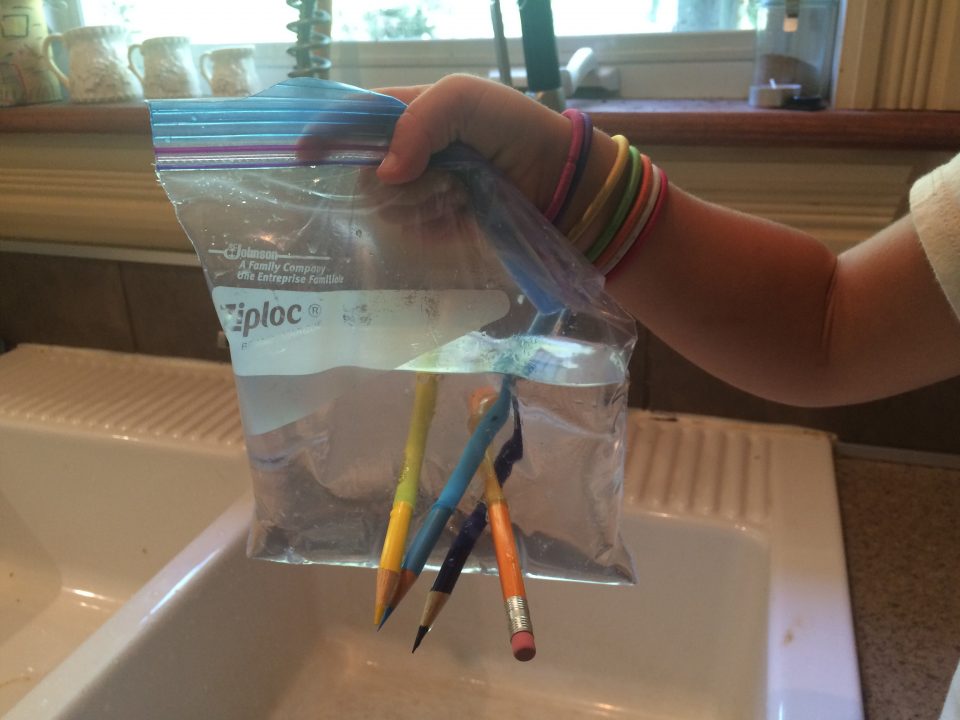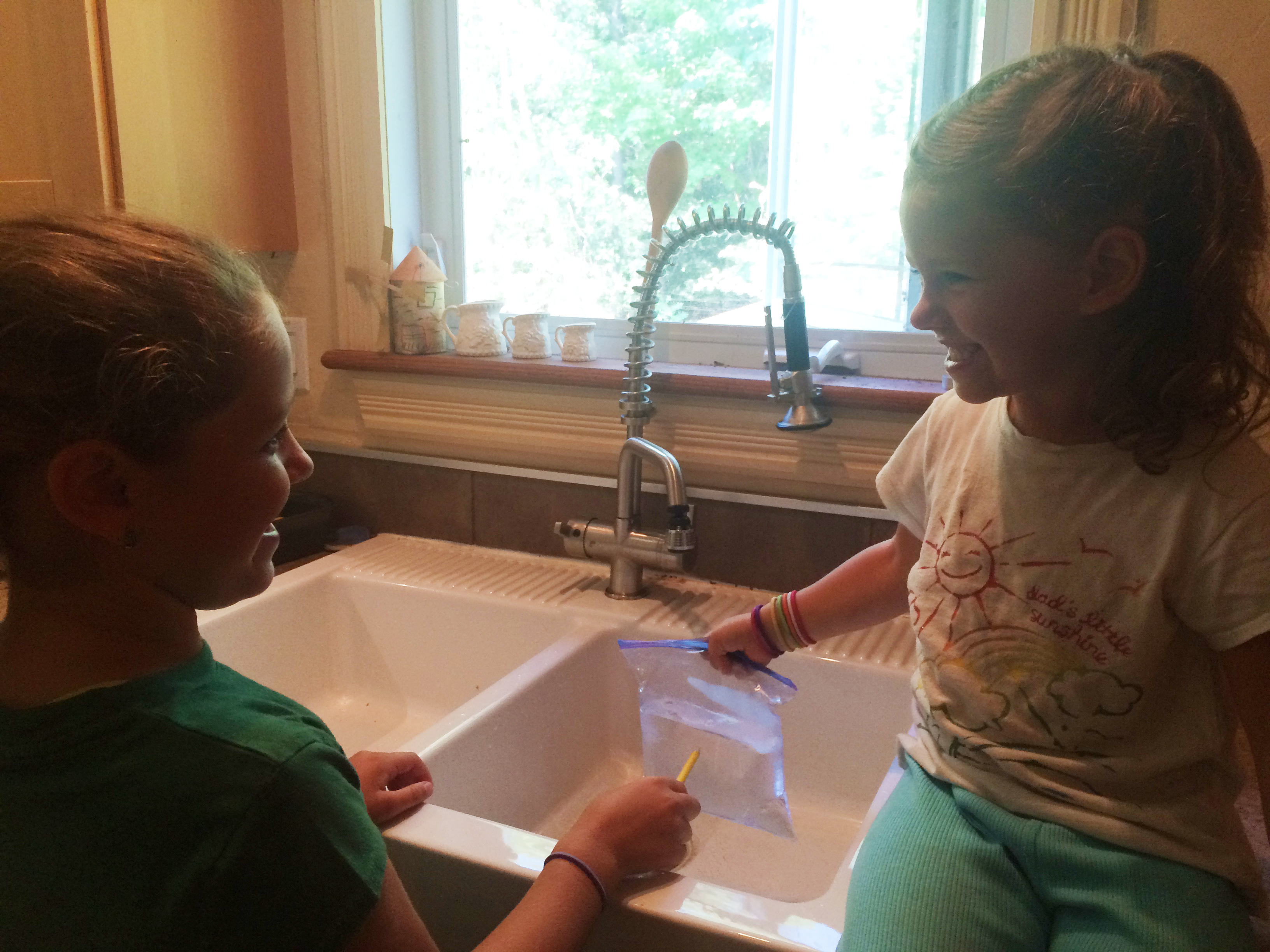
Power of Polymers: Make a Leak-Proof Bag
Have a zipper-lock bag and some pencils? Then you can wow your kids—and send them out to wow the neighborhood kids by making a leak-proof bag!
Here’s how to do it:

Step 1: Fill the plastic bag halfway with water. Seal it and hold it firmly at the top. (We did so over a sink, just in case…just in case.)
Step 2: Take a handful of well sharpened pencils. Ask your kids what will happen if you poke them through the bag. (If they’re like mine, they’ll be skeptical. Is she really going to make a big water mess? Watch their eyes get big and the wheels in their heads start moving.)
Step 3: One by one, stick the pencils through the bag, in one side and out the other. Make sure the pencils stay with one side sticking out each side of the bag (i.e., don’t push the pencil all the way through). Invite the kids to do the same.
Step 4: Ta-da! Though the bag has been pierced many times, there are no leaks!
How does it work?

Those plastic zipper-lock bags are made of polymers, long chains of molecules that seal back around the pencil that pushed through them. (I told my kids, those molecules love each other and want to stick together!) The most common polymer in these bags is called low-density polyethylene. It’s moisture-proof and flexible. This prevents the bag from leaking, as long as the polymers can seal around the pencils. If you push the pencil all the way through, of course, the water will leak out of the bigger holes created in the polymer’s long chains.
What’s next?
Got their attention? Continue the experiment with a few variations.
- Try plastic bags with different thicknesses, for example a high-quality freezer bag versus one of those flimsy plastic bags you put fruit in at the grocery store.
- Try different thicknesses and shapes of pencils.
- Make your own polymer! This is quite a bit messier than the leak-proof bag, but just as easy. Mix equal parts white school glue and warm water in a bowl. Add a few drops of food coloring (optional). In a separate bowl, mix a teaspoon of Borax and half a cup of warm water. Add this solution, little by little, into your glue mixture until you end up with a slimy polymer.
- What other polymers can you think of? Silly Putty is one!
- Describe the characteristics of polymers: stretchy, soft, sticky, moldable, etc.
And that’s a wrap!
